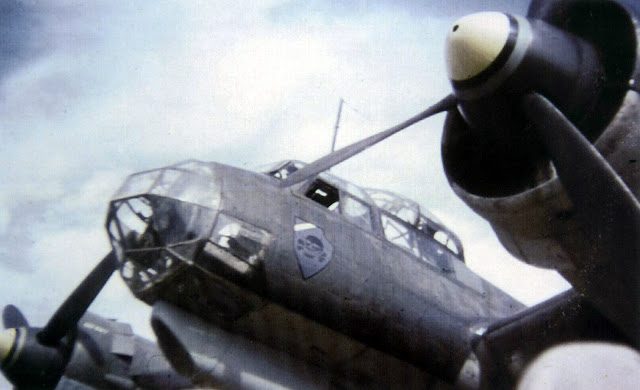

SS-Obergruppenführer und General der Waffen-SS Theodor Eicke participated in World War I as a paymaster. He later joined the "Zollgrenzschutz":, which were engaged in the defense of Germany’s eastern borders against Polish attacks following the Great War. Subsequent to this service with the latter formations, Eicke joined the "Schützpolizei" and later a "Detective Bureau".
Eicke had joined the "Polizei" in 1927 and soon thereafter came into contact with the Allgemeine-SS. He became a member and, compared to his fellow officers, was promoted quickly. Together with his comrades in the Allgemeine-SS, as well as with the police, NCOs and enlisted men discharged from the Reichswehr, he set up "Hilfspolizei" squads (auxiliary police units formed in early 1933). These were organized to combat Hitler’s opponents and also to guard them after they had been arrested. Once the new government had obtained power, Eicke formed so-called "SS-Hundertschaften", from which the later "Totenkopfverbände" ("T.-Sturmbanne" and "T.-Standarten") evolved. These men guarded the Oranienburg Concentration Camp near Berlin, as well as the camp at Dachau, north of München. The prisoners in these camps … communists, social-democrats, members of the "Reichsbanner", as well as other opponents of Hitler … were often subjected to brutal treatment.
It should be noted that when Eicke took over the command of all concentration camp personnel, as well as all SS-Totenkopfverbände, he attempted to train these men along army lines, or at least in a manner similar to the training received by the SS-Verfügungstruppe units. When the Reichswehr refused to issue Eicke’s men with light infantry weapons, in contrast to the SS-Verfügungstruppe, Eicke procured such weapons on his own, drawing upon the caches of arms hidden by SA-troopers. Eicke also played a role in the crushing of the "Röhm Putsch", and, as a result of laws passed after 30 June 1934, his units officially became part of the SS under the supreme command of Himmler. Up until that time, they had been directly subordinated to the supreme command of the SA.
At any rate, by 1938/39, Eicke’s troops had all received some basic military training and had been issued with light infantry weapons such as rifles, carbines, pistols, WWI machine-guns, and some mortars. When the Second World War broke out, Eicke formed a division from the Totenkopf units, reinforced by reserves from the Allgemeine-SS, Army reservists and the police. The Division was partially motorized, had been constituted at Dachau (the Waffen-SS training base), and had undergone full military training at Obermünsingen, Württemberg, during the winter of 1939/40.
On 6th February 1943, Eicke was on an inspection flight in a Fiessler-Storch when his plane was shot down by the Soviets and crashed behind their lines. Several attempts were made by reinforced assault squads to recover the remains of their commander. They finally succeeded, after losing several men. Eicke was given an elaborate funeral at one of the cemeteries of the Division near Orelka, Russia. In a manner reminiscent of the funeral rites performed by the ancient Germans upon the death of their tribesmen or kings, Theodor Eicke, or "Papa Eicke", as his troops called him, was laid to rest.
Later, when German forces had withdraw, officers from the divisional staff, together with a few selected men, exhumed Eicke’s corpse and brought it back by truck to Kiev. His remains were not to fall into enemy hands! Officials from the legal section of the military authorities investigated this incident and the officers responsible are said to have been reprimanded.
Source :
http://www.historicalwarmilitariaforum.com/topic/6937-ritterkreuztr%C3%A4ger-photos-in-color-thread/?page=2
https://www.tracesofwar.com/persons/29942/Eicke-Theodor.htm

















































